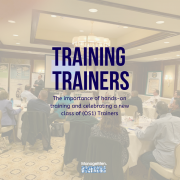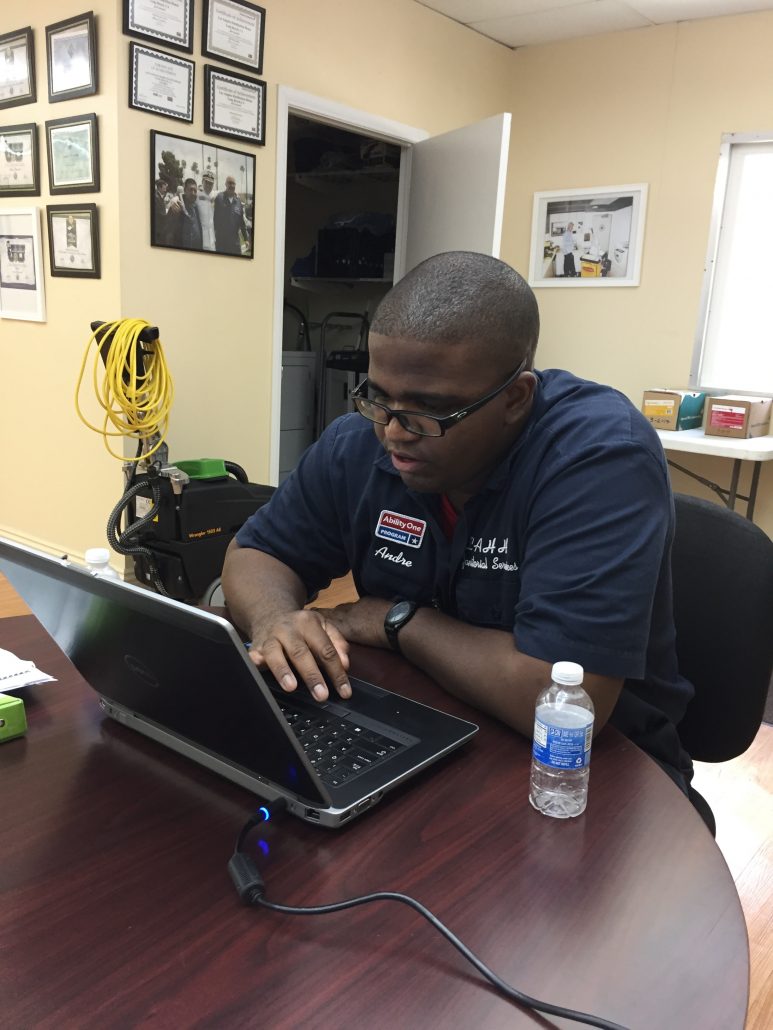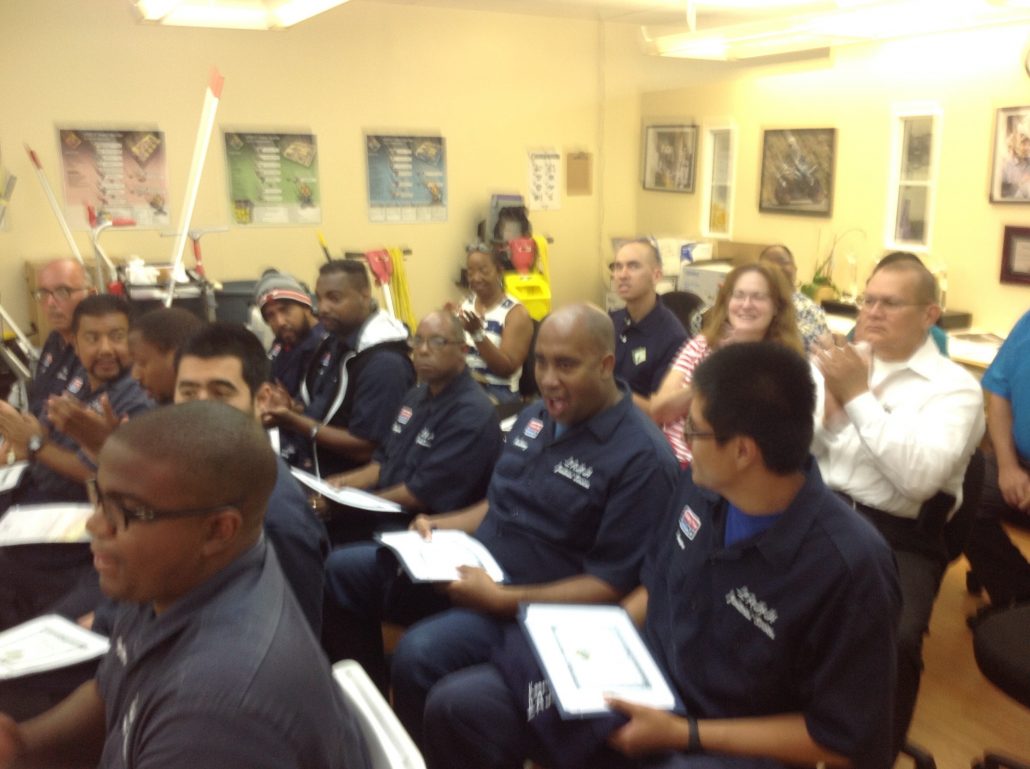Training the Trainers
There’s a popular quote from Benjamin Franklin that says, “Tell me and I forget, teach me and I may remember, involve me and I learn.”
Involvement is central to the way we approach all of our training courses, but specifically the (OS1) Trainer course that took place two weeks ago. Sure, there’s some classroom instruction, but as attendees to this class will tell you, they spend a lot of time in small groups or with partners, demonstrating techniques and applying principles of the training.
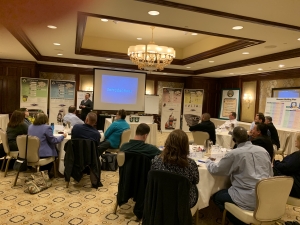
You might be thinking, “We do hands-on training—our cleaning workers follow an experienced trainer around for a couple of days before starting on their own.”
This is not the same thing.

Trainers of cleaning workers need training that goes beyond the specifics of how to do the job. The same goes for cleaning workers—they not only need to understand how and what to clean, but WHY we clean. It’s one thing to spray disinfectant on a surface and move on, but it’s another thing to understand the principles of microbiology and why dwell time is everything when it comes to killing viruses.
Qualified through Testing
Congratulations to the 15 individuals who successfully completed a one-hour exam with an 80 percent score or higher to earn the designation as (OS1) Trainer Certificate Holder. They will hold this designation from May 2019 – May 2020.
Brandon Baswell, Michigan State University
Dominic Bratta, DNM Training and Consulting, LLC
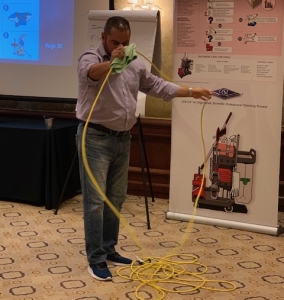
William Carroll, Eurest Services
Chuck Crawley, Sandia National Labs
Rebecca Delap, Michigan State University
Joseph Garcia, Victor Valley College
Minda Gorsline, Michigan State University
Jeff Hawkins, Provo City School District
Lorenzo Meza, Mt. San Antonio College
Guido Piccarolo, Los Angeles Habilitation House
Judy Ramirez, Michigan State University
Joshua Sego, Michigan State University
Scott Spencer, Eurest Services
Anna Tobias, University of Michigan
Anna Atencio-Torres, Sandia National Labs
What Makes the (OS1) Trainer Course Unique
Specifically designed to support organizations implementing (OS1), our Trainer course reviews general principles around training professional cleaning workers, including the science of cleaning, eliminating resistance to training, how to get the most out of your training and more.
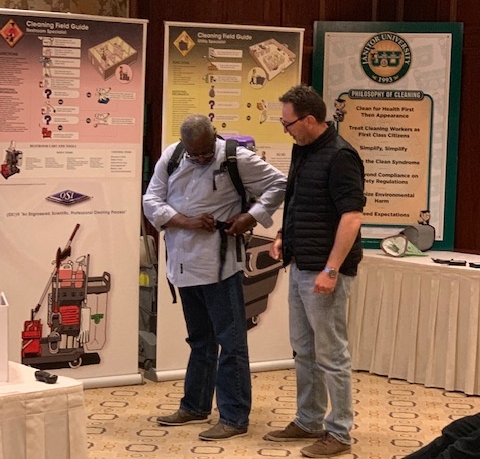
The purpose of the hands-on approach is two-fold: not only do our trainers get more out of the session, but they will model their training accordingly. This better engages cleaning workers in the training process.
After two days of rigorous instruction and attendee-led demonstration, students have the option of taking an exam to earn their (OS1) Trainer Certificate Holder designation. Those who pass will be able to lead instruction of the (OS1) Boot Camp Class and Basic Training Certification Course.
While the class is great for people who manage custodians in a (OS1) operation, it’s also a great options for those who have retired from careers in facility management and are looking to stay involved with training part-time. We have several new (OS1) organizations that will be coming online this year and regularly need trainers who can assist with educating new teams on what it means to clean with (OS1).
Interested in learning more about (OS1)? Consider attending the annual Symposium from the Simon Institute happening this Oct. 7-9, 2019, where users will share best practices and discuss the successes they’ve achieved through the (OS1) System.

